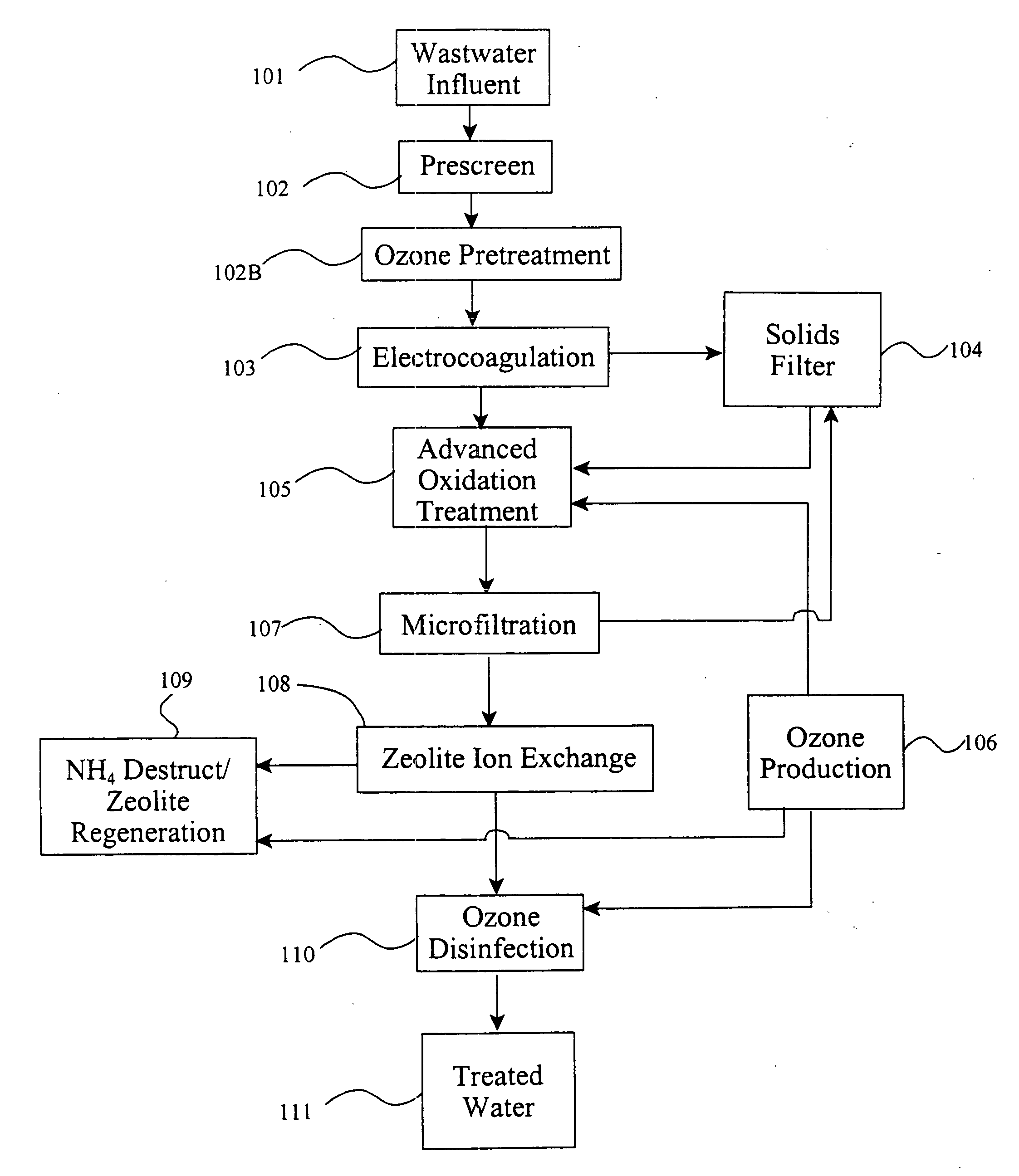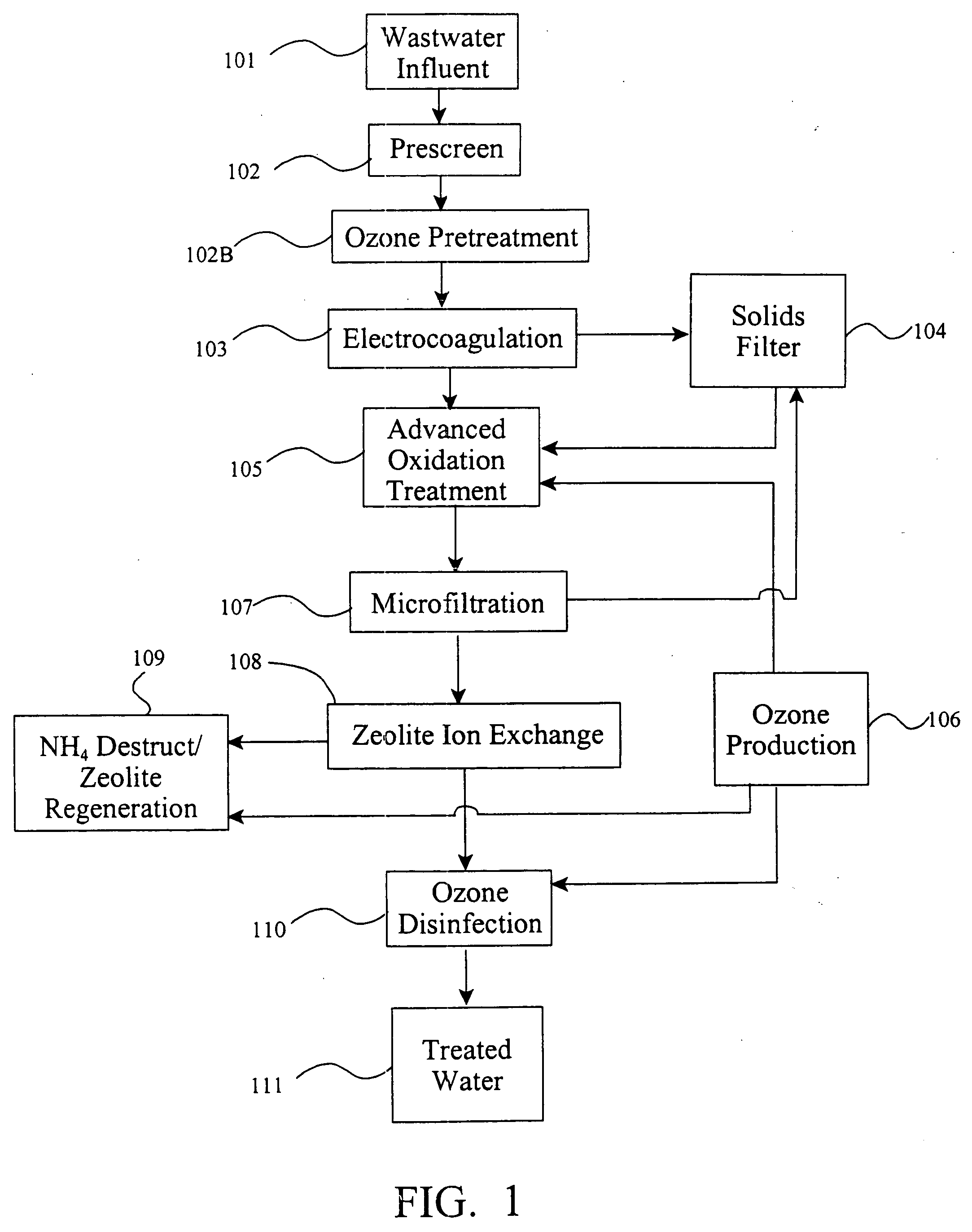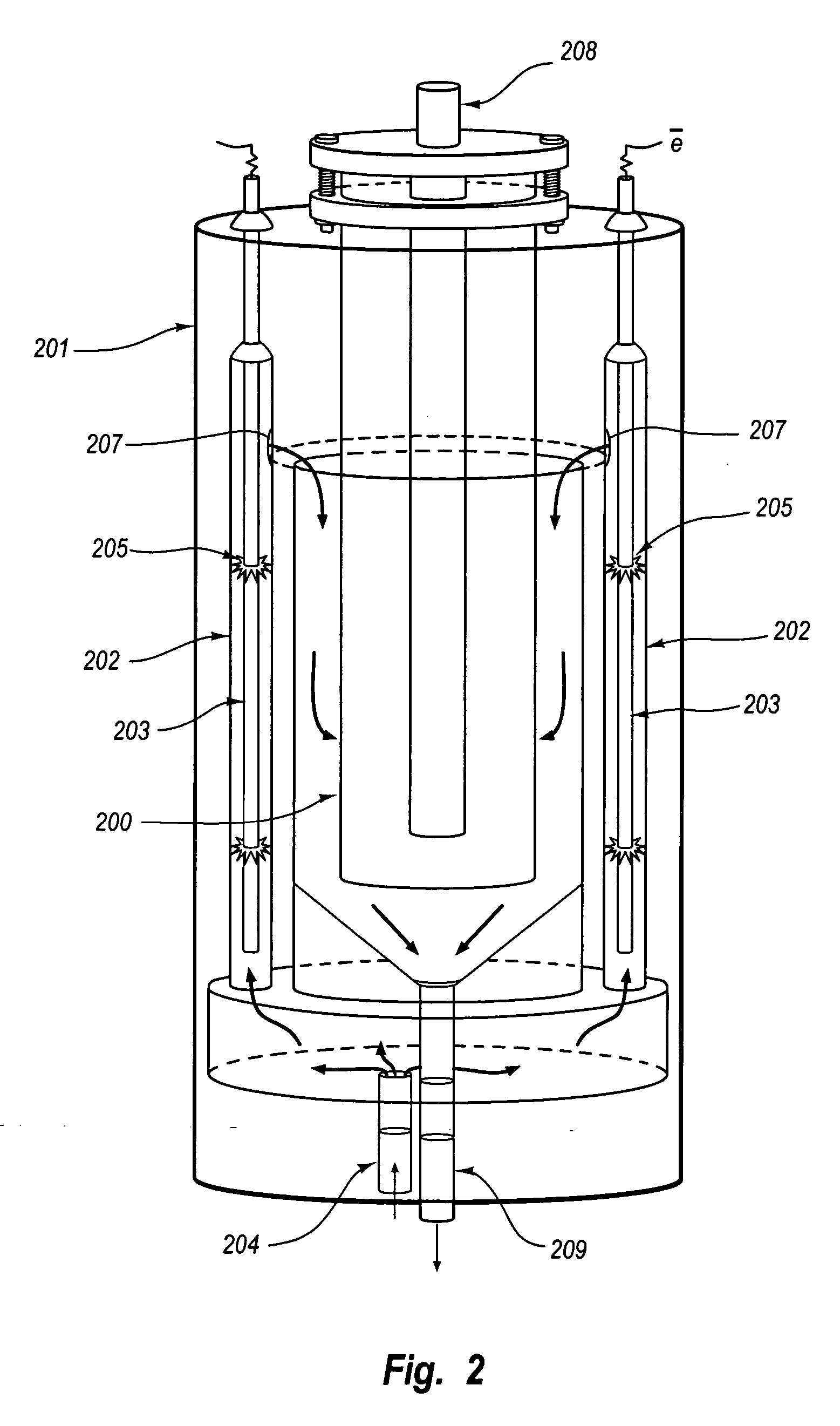Continuous ammonium removal systems
a technology of ammonium removal and ammonium sludge, which is applied in the direction of water/sewage treatment by ion exchange, nuclear engineering, and sedimentation settling tanks, etc. it can solve the problems of affecting the effect of reducing the amount of toxic sludge produced by biological processes, affecting the effect of reducing the amount of toxic sludge, and limiting the effectiveness of biological systems
- Summary
- Abstract
- Description
- Claims
- Application Information
AI Technical Summary
Benefits of technology
Problems solved by technology
Method used
Image
Examples
Embodiment Construction
[0026] Reference will now be made to the exemplary embodiments illustrated in the drawings, and specific language will be used herein to describe the same. It will nevertheless be understood that no limitation of the scope of the invention is thereby intended. Alterations and further modifications of the inventive features illustrated herein, and additional applications of the principles of the inventions as illustrated herein, which would occur to one skilled in the relevant art and having possession of this disclosure, are to be considered within the scope of the invention.
[0027] The singular forms “a,”“an,” and “the” include the plural referents unless the context clearly dictates otherwise. Thus, for example, reference to “a heat source” includes reference to one or more such heat sources.
[0028] As used herein, “effective amount” refers to the minimal amount of a substance, agent, action, or time period to achieve a desired effect. For example, an effective amount of “cooling”...
PUM
| Property | Measurement | Unit |
|---|---|---|
| DC voltage | aaaaa | aaaaa |
| DC voltage | aaaaa | aaaaa |
| DC voltage | aaaaa | aaaaa |
Abstract
Description
Claims
Application Information
 Login to View More
Login to View More - R&D
- Intellectual Property
- Life Sciences
- Materials
- Tech Scout
- Unparalleled Data Quality
- Higher Quality Content
- 60% Fewer Hallucinations
Browse by: Latest US Patents, China's latest patents, Technical Efficacy Thesaurus, Application Domain, Technology Topic, Popular Technical Reports.
© 2025 PatSnap. All rights reserved.Legal|Privacy policy|Modern Slavery Act Transparency Statement|Sitemap|About US| Contact US: help@patsnap.com



